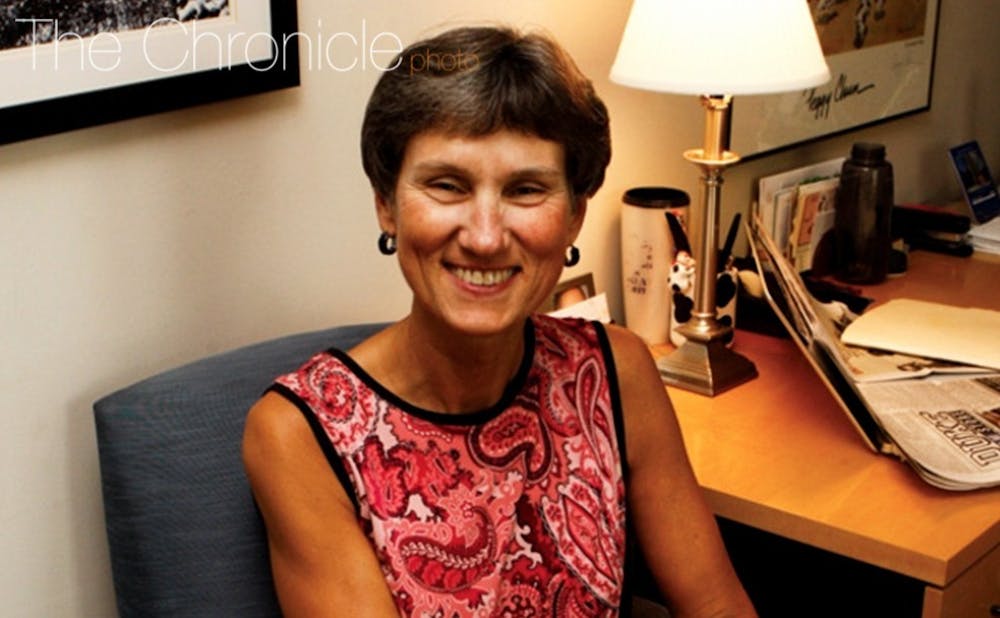“No one showed up to my zoom meeting last week,” said Sue Wasiolek, the faculty-in-residence in Gilbert-Addoms Residence Hall.
Wasiolek, the legendary former dean of students known commonly as Dean Sue, is one of nine faculty-in-residence living in campus dorms this year. These faculty are responsible for encouraging interaction between faculty and first-year students, helping students learn more about academic and social opportunities at Duke, and sorting out issues that arise for their residents.
Last year, Wasiolek could often be found reading on her couch, surrounded by a handful of students working on assignments and munching on snacks. Thanks to the COVID-19 pandemic, this type of interaction is now prohibited.
“I [had] students in my apartment every weekend. We would bake brownies and do a wide assortment of things,” said Wasiolek, who now serves as associate vice president for student affairs and senior advisor. “This year there isn’t that depth of connection like there was in previous years—and that’s something I miss.”
Christine Folch, assistant professor of cultural anthropology and the faculty-in-residence in Randolph, agreed that this year’s pandemic-related safety precautions inhibited community-building in residence halls. “You don’t get to know people the way I have been able to in previous years,” Folch reflected.
In order to combat the increased isolation resulting from social distancing policies, both Folch and Wasiolek said they are regularly meeting with students one-on-one for outdoor lunches and dinners.
“What has happened is that the interactions we do have feel more precious,” Folch said.
Given special permission from administrators, Folch and Wasiolek have been able to host several small gatherings, including Duke gardens walks and “puppy therapy” events.
Some students have had memorable positive interactions with their faculty-in-residence.
First-year Allen Parayil, resident of Bell Tower, interacted with Wasiolek last semester during a voter registration event. “I got some ice cream and got to meet Dean Sue!” said Parayill.
First-year Pegram resident Sam Sreeram met her faculty-in-residence, Hsiao-mei Ku, professor of the practice of music, during a dorm talent show. Other students, however, don’t even know their faculty-in-residence’s name.
Wasiolek said that she sympathizes with students’ lack of motivation to get to know their faculty-in-residence, especially given the virtual nature of most programming this year. “I’ve had days where I have Zooms from 8:30 [a.m.] until the evening with only a 30-minute break, and I wouldn’t opt to go to another Zoom to see my FIR either,” Wasiolek said.
Although faculty-in-residence’s duties mainly involve community-building, they occasionally have to take a disciplinary role. For example, Folch had to tell groups of students in common rooms to put on their masks several times last semester, she said.
“Enforcing rules is not why I got into this role,” Folch said, reflecting that she was inspired to become a faculty-in-residence because of her own “powerful undergraduate experience.”
Wasiolek said that she has not yet had to take disciplinary action against students this year. “Students, for the most part, have been doing really well socially distancing, and I am very proud of this class,” said Wasiolek.
Get The Chronicle straight to your inbox
Signup for our weekly newsletter. Cancel at any time.

